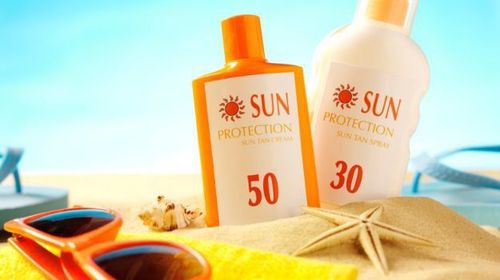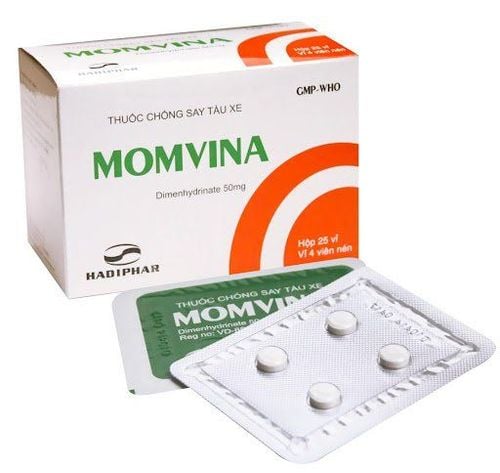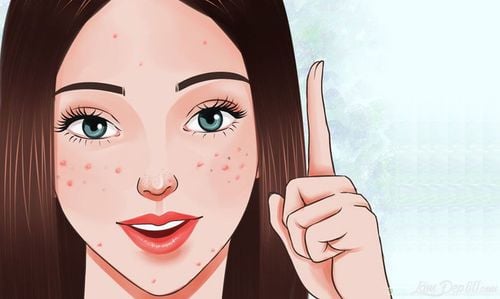This is an automatically translated article.
Chemical sunscreens contain organic substances that are able to absorb and convert UV rays into a lower energy form and safer for the skin. Chemical sunscreen with thin texture and outstanding sun protection has become the favorite choice of many women.1. What is chemical sunscreen?
Chemical sunscreen is an organic sunscreen with the following main ingredients: avobenzone, oxybenzone, sulisobenzone,... Sunscreen has the ability to absorb, absorb and convert UV rays into energetic rays. lower, safer, and no harm to the skin.
Chemical sunscreens are usually thin, light, colorless, odorless and are rated higher than physical sunscreens in terms of UV protection.
2. Mechanism of chemical sunscreen
Chemical sunscreens act as a chemical filter, protecting the skin from UV rays by absorbing, processing, and breaking down these rays before they can cause damage to the skin. Chemical sunscreens include many different ingredients such as avobenzone, oxybenzone, sulisobenzone..., each ingredient will be able to block one type of UVA or UVB rays. The chemical ingredients in the cream will combine to form a complex that blocks both UVA and UVB rays.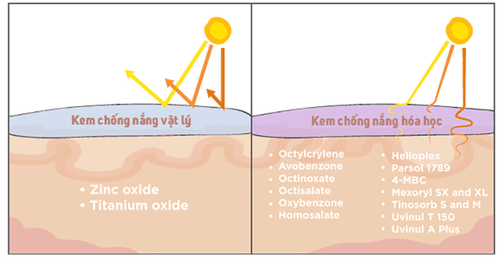
Cơ chế tác dụng của kem chống nắng hóa học
3. What are SPF and PA numbers?
SPF and PA are the numbers that appear on most chemical sunscreens and sometimes on physical sunscreens. These two indexes reflect the ability to resist UVA and UVB rays, specifically as follows:
SPF (Sun Protection Factor) is the UVB protection index, the higher the SPF, the longer the time in the sun. 1SPF is equivalent to 5, 8, 10, 15 or 20 minutes depending on each sunscreen brand. The higher the SPF number, the longer the protection time of the product. PA (Protection Grade of UVA) is an index of UVA protection. There are 3 levels of PA+, PA++, PA+++, respectively, with weak UVA protection (4 hours), moderate (8 hours) and strong (12 hours). You need to choose a sunscreen with 2 suitable SPF and PA ratings to protect your face in the best way. Almost all sunscreens offer protection against UVB rays, but not all protect against UVA rays, so you need to read the product packaging carefully to understand the product's properties.
4. Pros and cons of chemical sunscreens
Advantages:Chemical sunscreen has a thin, light texture, is less greasy, so it is easy to apply evenly on the skin and is less likely to clog pores., convenient for daily use. Does not leave white streaks on the skin, easily absorbed into the skin and does not make the skin oily. The amount of cream must be used less than physical sunscreen Chemical sunscreen is easy to match skin color and can also be used as a makeup primer. Chemical sunscreens come in a variety of SPFs and even water-resistant ones, to suit a variety of customers' needs. Easy-to-add formula with therapeutic ingredients like peptides and enzymes and other skin care ingredients Cons:
Chemical ingredients can cause skin irritation, especially if you have sensitive skin. The higher the SPF, the more likely it is to cause irritation. Unsustainable so after 2 hours have to reapply. May cause eye irritation, watery eyes Oily skin users who use chemical sunscreens are prone to breakouts. After applying, wait 15-20 minutes for the cream to absorb into the skin and take effect before going out in the sun. May cause an increase in existing spots and discoloration, darkening of skin due to higher internal skin temperature (Sunscreen works by changing UV rays into heat, then releasing heat from skin)
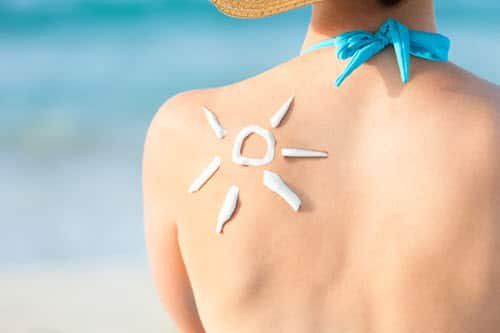
Lựa chọn kem chống nắng phù hợp với làn da
5. Notes to help use effective chemical sunscreen
Choose a sunscreen with a sun protection index suitable for environmental conditions Sunscreen is the last step in the skin care process, after moisturizing and before makeup. After applying the moisturizing layer, it is recommended to wait about 10-15 minutes before applying a layer of white sunscreen to avoid other ingredients affecting the effect of sunscreen Use sunscreen every day, even when working in the office. room, when it's shady, it's raining because UV rays can still shine through clouds, glass doors, clothing fabrics. Apply sunscreen on the neck because this area has thin skin and is very susceptible to damage under the influence of UV rays. After applying sunscreen, wait about 20 minutes for the cream to take effect before going out. It is necessary to choose a separate sunscreen for the face and body, do not use a full-body sunscreen for the face because it is easy to cause irritation, allergies, and a sticky feeling, acne.
Please dial HOTLINE for more information or register for an appointment HERE. Download MyVinmec app to make appointments faster and to manage your bookings easily.





